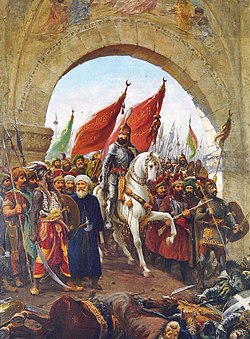This article needs additional citations for verification .(September 2025) |
Entries in this chronological list of Muslim military leaders are accompanied by dates of birth and death, branch of Islam, country of birth, field of study, campaigns fought and a short biographical description. The list includes notable conquerors, generals and admirals from early Islamic history to the 21st century.

